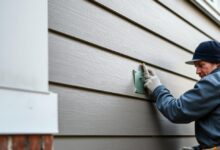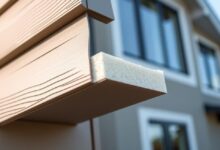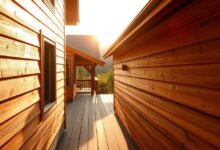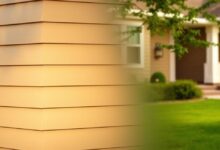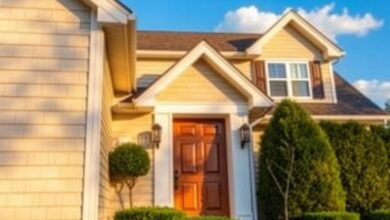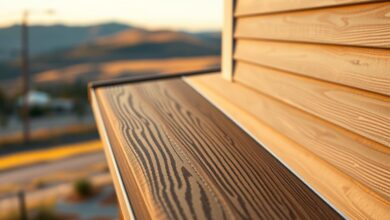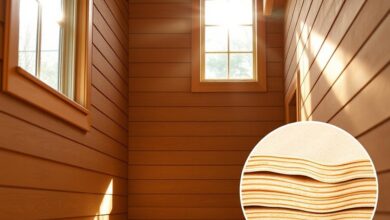Insulated Siding: Enhance Your Home’s Efficiency
Homeowners are always searching for ways to make their homes more energy efficient and comfortable. Insulated siding is becoming a popular choice. It’s a modern exterior finish that cuts down on heat transfer and keeps homes warm.
Installing insulated siding can lower your energy bills. It helps keep the indoor temperature steady. This makes your home more comfortable and helps the environment.
Insulated siding is a smart choice for home improvement. It’s a long-term investment that saves money on energy and boosts your home’s value.
Key Takeaways
- Insulated siding reduces heat transfer, keeping homes cozy.
- It leads to lower energy bills and increased comfort.
- A valuable home improvement that enhances property value.
- Contributes to a more sustainable living environment.
- An investment with long-term benefits through reduced energy costs.
What Is Insulated Siding and How Does It Work?
Insulated siding is a big step forward in building tech. It boosts thermal performance and durability. It’s a top pick for those wanting to improve their home’s exterior.
Definition and Core Components
Insulated siding wraps your home in a durable, energy-saving layer. It’s made of vinyl or fiber cement with insulation in the middle. This setup cuts down on heat loss and gain, keeping your home comfy.
The outer layer fights off weather damage. The insulation layer is key for keeping heat in or out. This means your home stays cozy, no matter the season.
| Component | Function | Benefits |
|---|---|---|
| Exterior Material | Provides durability and weather resistance | Long-lasting, low maintenance |
| Insulation Layer | Reduces heat transfer | Improved energy efficiency, reduced utility costs |
| Exterior Sheathing | Structural integrity and additional insulation | Enhanced durability and energy efficiency |
The Science of Thermal Insulation in Siding
Thermal insulation in siding works by blocking heat flow. The insulation layer is key here. It keeps your home warm in winter and cool in summer, saving on heating and cooling costs.
The R-value measures how well insulated siding works. A higher R-value means better insulation. Choosing the right R-value for your area can greatly improve your home’s energy use.
In short, insulated siding is a smart choice for energy savings and a greener home. Knowing how it works helps homeowners make better choices for their homes.
The Benefits of Insulated Siding for Your Home
Insulated siding is a big improvement for homes. It makes living better and saves money. It boosts energy efficiency, cuts down on noise, and lasts longer.
Energy Efficiency and Utility Cost Savings
Insulated siding makes homes more energy-efficient. It keeps the inside temperature steady. This means lower bills for heating and cooling.
In cold places, it keeps warmth in. In hot places, it keeps the sun’s heat out. This saves a lot of energy.
Noise Reduction Properties
Insulated siding also reduces noise. It blocks out sounds from outside. This makes homes quieter, perfect for busy cities or near highways.
Enhanced Durability and Impact Resistance
It’s not just about saving energy and quiet. Insulated siding is also very durable. It can handle rain, hail, and extreme weather. This means it lasts longer, saving on repairs.
Environmental Benefits and Reduced Carbon Footprint
Lastly, it’s good for the planet. It uses less energy for heating and cooling. This lowers carbon emissions. So, it’s great for eco-friendly homes.
Comparing Insulated vs. Traditional Siding Options
Choosing the right siding is key to making your home more efficient. There are many siding options, each affecting your home’s look and energy use. Siding is more than just a cosmetic choice; it’s about energy efficiency too.
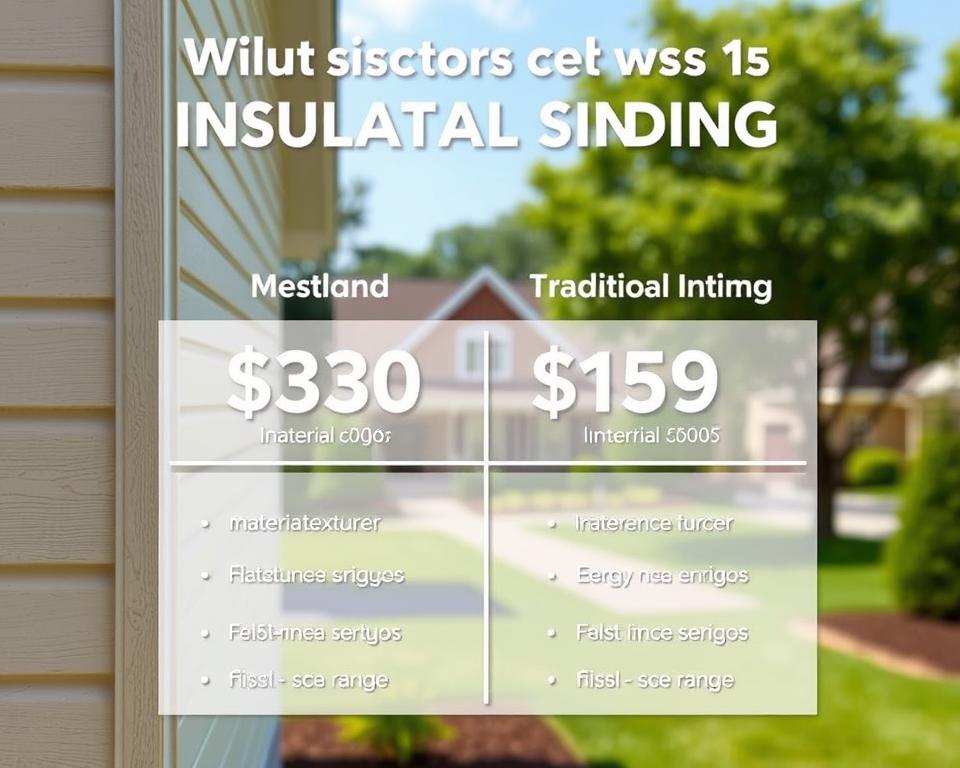
R-Value Comparisons
The R-value shows how well siding keeps heat out. Insulated siding has a higher R-value than traditional siding. This means it keeps your home warmer in winter and cooler in summer.
With better insulation, your home stays at a steady temperature. This can lower your energy bills. It’s a big plus for those wanting to save on energy costs.
Long-Term Cost Analysis
Insulated siding costs more upfront than traditional siding. But, it saves money over time. It helps lower your energy bills and might need less maintenance and repairs.
- Lower energy bills due to enhanced insulation
- Potential for reduced maintenance costs
- Longer lifespan compared to some traditional siding materials
Aesthetic Differences and Design Options
Many think insulated siding is less stylish. But, today’s insulated siding comes in many designs. It can look just like traditional siding.
With so many design choices, you don’t have to give up style. Whether you want something modern or classic, there’s an insulated siding option for you.
Installation, Costs, and Financial Incentives
Thinking about insulated siding for your home? It’s important to know about installation, costs, and financial help. This info helps homeowners make smart choices and get the most from their investment.
Professional Installation Process
Installing insulated siding needs a pro to do it right. Professional installers check your home’s exterior, get ready the materials, and follow the maker’s rules. This ensures the siding works well, lasts long, and looks good.
Good installation means checking for damage, aligning the siding right, and sealing gaps to keep moisture out. It’s wise to choose contractors with experience in insulated siding to avoid mistakes.
Price Ranges and Return on Investment
Insulated siding costs vary by material, quality, and where you live. On average, it’s $10 to $15 per square foot, including installation. It’s pricier than regular siding, but the long-term energy savings and higher property value make it worth it.
Get quotes from different contractors to compare prices and services. Remember, the long-term savings and lower upkeep costs make the initial cost worth it.
Maintenance Requirements and Lifespan
Insulated siding is durable and easy to keep up. It doesn’t fade, crack, or get damaged by bad weather. Just clean it and check it now and then to keep it looking and working great.
This siding lasts 20 to 50 years or more, based on the material and how well it’s installed. Its long life, energy saving, and noise reduction make it a great choice for homes.
Tax Credits and Energy Efficiency Rebates
Installing insulated siding might get you tax credits and rebates for energy efficiency. These can lower the cost upfront and make your investment better. Check with local utilities and government sites for these programs.
Using these incentives can cut your initial costs. You’ll also save on energy bills and help the environment with less carbon emissions.
Conclusion: Making the Right Choice for Your Home
Insulated siding is a great choice for homeowners who want to save energy and help the environment. It makes your home more comfortable and valuable. Knowing its benefits helps you make smart choices for your home.
Insulated siding cuts down on utility costs and noise. It’s also more durable than regular siding. Plus, it’s good for the planet by using less energy and reducing carbon emissions.
Thinking about updating your home’s look? Insulated siding is a smart pick. It keeps your home cozy in winter and cool in summer. You’ll also save money on energy bills and help the planet.

